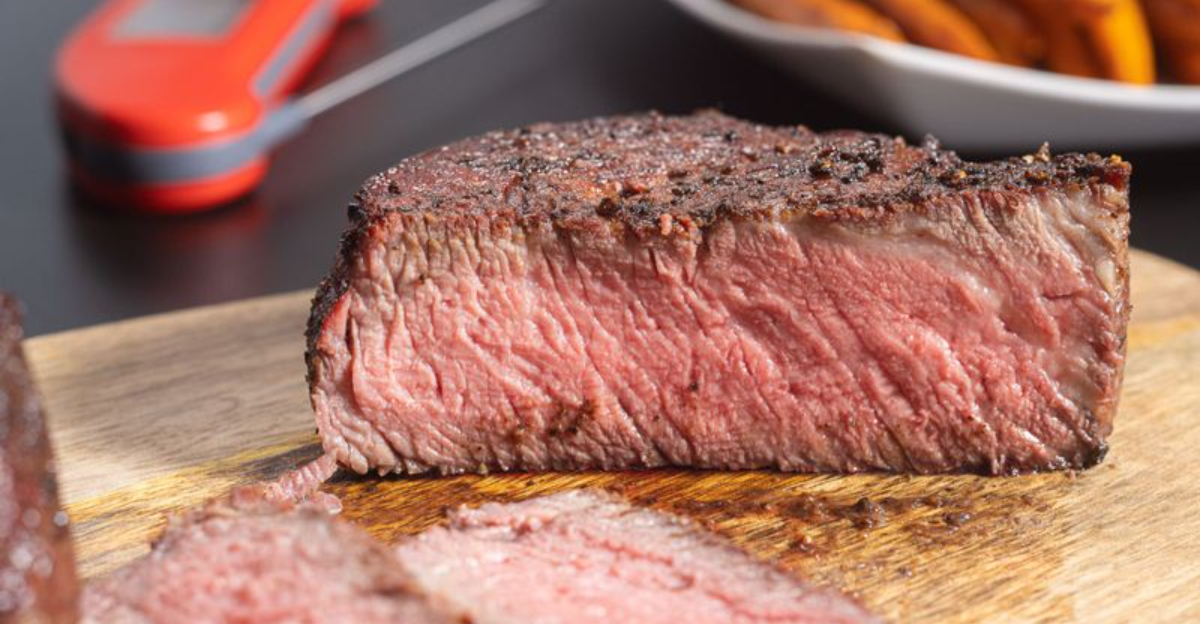10 Outdated Cooking Tips That Actually Make Your Food Taste Worse

We’ve all inherited bits of cooking wisdom, passed down from grandma’s cozy kitchen or casually offered by well-meaning friends. While some of these tips are tried-and-true, others might be quietly sabotaging your meals without you even realizing it.
After countless burnt pans, underseasoned sauces, and flavorless flops, I’ve come to learn that not all advice ages well.
Some “rules” were never right to begin with, and others have been outpaced by better techniques and modern understanding. It’s time to rethink what we think we know. Let’s bust some common culinary myths that could be turning your delicious dreams into dinner disappointments.
1. Rinsing Pasta After Cooking
I once served a beautiful bolognese that slid right off my freshly rinsed pasta, pooling sadly at the bottom of each plate. Mortifying! Rinsing pasta washes away the magical starch that helps sauce cling to each strand.
Your sauce needs something to grab onto, and that starchy coating is nature’s culinary glue. The only exception? Cold pasta salads benefit from a quick rinse to stop the cooking process.
Next time, transfer your drained pasta directly to the sauce and watch how they embrace each other in perfect harmony. Your guests will wonder what secret ingredient makes your pasta dishes so wonderfully cohesive.
2. Adding Oil to Pasta Water
Growing up, I religiously drizzled olive oil into boiling pasta water because mom said it prevented sticking. Years later, an Italian chef friend watched in horror as I performed this ritual. ‘What are you doing to that poor pasta?!’
Oil creates a slippery barrier that prevents sauce from adhering properly. Your pasta ends up dressed in sauce rather than integrated with it, like wearing a raincoat instead of absorbing a warm hug.
Simply stir your pasta during the first two minutes of cooking to prevent sticking. This small change transformed my pasta game from amateur to impressively authentic overnight.
3. Overcrowding the Pan When Sautéing
My mushrooms used to turn out pale and soggy until I discovered my critical mistake. Cramming too many into the pan wasn’t saving time, it was steaming my fungi instead of giving them that gorgeous golden sear!
When ingredients touch too closely, they release moisture that gets trapped. Instead of caramelizing, they stew in their own juices. The difference in flavor between properly seared and overcrowded ingredients is night and day.
Give your food some personal space! I now cook in batches when needed, and my stir-fries, sautés, and roasted vegetables have transformed from bland to restaurant-quality with this simple fix.
4. Cooking Meat Straight from the Refrigerator
The revelation hit me after years of serving steaks charred outside yet cold inside. A chef friend watched me cook and gasped when I slapped an ice-cold steak onto a hot pan.
Cold meat hits a hot surface and contracts violently, pushing out juices and creating uneven cooking. The outside overcooks while the inside struggles to reach temperature. Letting meat rest at room temperature for 20-30 minutes before cooking creates magic.
My first properly tempered steak was a revelation, evenly pink, perfectly juicy, and requiring less cooking time. This simple step transformed my meat dishes from amateur to impressive overnight.
5. Adding Salt Only at the End
My grandmother swore by adding salt only at the very end of cooking. ‘It keeps the food from drying out,’ she’d insist. Years later, I prepared two identical soups, one salted throughout cooking, one at the end, for a blind taste test with friends.
The properly seasoned-as-you-go soup won unanimously. Salt isn’t just about making food ‘salty’, it’s a flavor enhancer that needs time to dissolve and penetrate ingredients.
When added early, salt draws out moisture and flavors that then redistribute throughout the dish. The result? A harmonious, well-developed taste rather than a superficial saltiness that sits on top of bland food.
6. Washing Raw Chicken Before Cooking
Splashing water over raw chicken used to be my pre-cooking ritual until a food safety class changed everything. The instructor showed us bacteria spread patterns using a special light. My jaw dropped seeing how far those invisible droplets traveled!
Washing chicken doesn’t remove bacteria, it spreads it everywhere. Counter surfaces, nearby dishes, even your clothes become contaminated with microscopic droplets that can travel up to three feet from your sink.
Proper cooking kills bacteria more effectively than any rinse. My kitchen became a safer place the moment I stopped this unnecessary step, and my chicken still turns out perfectly clean and delicious every time.
7. Overmixing Batter for Tenderness
My muffins used to have the texture of rubber balls. ‘Mix thoroughly for smoothness,’ my old cookbook advised. Friends politely nibbled my dense creations until a pastry chef finally intervened during a baking session.
‘You’re activating too much gluten!’ she exclaimed, gently taking the spoon from my hand. Overmixing develops gluten strands that toughen baked goods. The perfect pancake, muffin, or cake batter should look slightly lumpy and uneven.
My first batch of barely-mixed blueberry muffins rose into tender, pillowy domes that melted in the mouth. The difference was so dramatic I actually laughed out loud when I bit into one.
8. Using Dull Knives for Safety
My mother-in-law gasped when she saw me sharpening knives. ‘Dull knives are safer!’ she insisted. This myth nearly cost me a finger when my blunt knife slipped off a tomato and headed straight for my hand.
Dull blades require more force to cut through food, making slips more likely and more dangerous. They also crush cell walls instead of cleanly slicing, which damages the texture and flavor of ingredients.
After switching to properly maintained sharp knives, I noticed my prep time cut in half and my ingredients looking more professional. Even better, the enhanced precision means my herbs stay vibrant green instead of turning into sad, bruised clumps.
9. Using Nonstick Pans on High Heat
The smoke billowing from my overheated nonstick pan should have been my first clue. For years, I cranked the heat to maximum for a ‘quick sear’ until a chef friend intervened during dinner prep. ‘That coating is breaking down as we speak!’
Most nonstick coatings begin to degrade above 500°F, releasing potentially harmful compounds. The damage isn’t just about health, it ruins the pan’s performance and sends those chemicals straight into your food.
Switching to medium heat was a revelation. My food actually cooks more evenly now, and my pans last years longer. For those high-heat searing moments, I’ve learned cast iron creates that perfect crust without the chemical concerns.
10. Cooking Frozen Meat Without Thawing
‘No time to thaw? No problem!’ promised a viral cooking hack I eagerly tried. The charred-yet-raw chicken disaster that followed taught me an unforgettable lesson about thermodynamics and patience.
Frozen meat forces heat to work overtime on the exterior while the icy center remains dangerously undercooked. This temperature struggle creates the worst of both worlds, dried-out edges with potentially unsafe centers.
Planning ahead with proper thawing methods revolutionized my weeknight cooking. For truly last-minute meals, I’ve discovered that smaller cuts like thin chicken breasts or fish fillets can safely thaw in cold water in under 30 minutes, faster than ruining dinner with the frozen shortcut.
